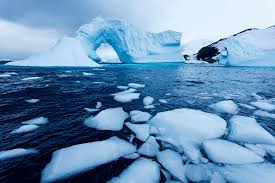Glacier Meltdown:

A recent study revealed that 110 glaciers in Arunachal Pradesh’s eastern Himalayas have disappeared over 32 years (1988-2020), with glacial cover shrinking by 309.85 sq. km.
- Glacial retreat occurs when glaciers melt faster than the accumulation of new ice and snow, leading to reduced ice cover and formation of glacial lakes.
- It is a key indicator of global climate change, affecting water resources, ecosystems, and disaster risks.
- Reasons Behind Glacier Meltdown:
- Rising Global Temperatures: The eastern Himalayas are warming faster than the global average (0.1°–0.8°C per decade).
- Increased Carbon Emissions: Accelerates atmospheric heating, leading to faster ice melting.
- Changing Precipitation Patterns: More rainfall instead of snowfall, disrupting glacial accumulation.
- Anthropogenic Activities: Deforestation, infrastructure projects, and tourism add to local warming.
- Black Carbon Deposits: From burning fossil fuels, reduces glacier reflectivity, increasing heat absorption.




